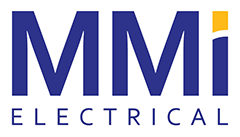How to Prep Your Electrical System for Your New Hot Tub
A hot tub is one of those luxuries people dream of in any season. Who doesn't want to retreat to their backyard after a long day of work to soak in hot water and massage jets? As long as the stars are overhead, it doesn't matter if the flowers are blooming or if there is snow on the ground; a hot soak feels good all year round.
While dreaming of purchasing a hot tub is easy to do, installing a new hot tub requires some advanced planning and electrical preparation. When considering installation, it's always best to consult qualified electricians for the project to determine if your service panel can support the electrical requirements or whether an upgrade is necessary.
Types of Hot Tubs
Different types of hot tubs, whirlpools, and spas have different wiring connections and electrical demands. The more powerful the tub, the more electricity it will require. The age of your home might also be a factor in the preparations. If you live in an older home, you may need to invest in some upgrades to prevent all your appliances from shutting off as soon as you turn on your hot tub.
There are two main categories of hot tubs available, and each requires different electrical preparations. One type is the plug-and-play spa, where you simply unload it into position and plug it into an outlet. The other type requires hardwiring it right to your electrical system. Both need preplanning and a qualified electrician to assess your home before and after installation. Let's look at the requirements for each type of hot tub and why it's essential to plan ahead.
What Is Required for Wiring a Hot Tub?
Meet the Canadian Electrical Code
Both types of tubs require electrical servicing that meets the Canadian Electrical Code (CEC) for safety and optimal performance. We recommend hiring a Master Electrician to ensure the job is done the first time correctly so you can enjoy your hot tub with peace of mind.
GFCI Breaker
One key requirement of the CEC is to install a ground fault circuit interrupter or GFCI breaker both for a hardwired tub and a plug-and-play spa. Water and electricity are deadly when combined, and a GFCI breaker can prevent serious harm and keep you safe.
Install a DCC System
For hardwired tubs, it's essential to install a manual disconnect device called a spa disconnect or direct current charge (DCC). This system will cut the power to your hot tub when it detects that your electrical panel will exceed its power capacity and prevent a total outage. These are useful, especially if your home runs on a 100-amp service.
Upgrade Your Service Panel
To enjoy your home spa consistently, it's essential to have sufficient electrical power to keep it running without tripping other breakers in your home. Having an electrician inspect your electrical panel will help you determine whether it's feasible to run a hot tub or not. Homes that have 100-amp service will have difficulty running any other major appliance while the home spa is on. A DCC can help prevent breakers from tripping, limiting how much use you'll have. To fully enjoy your hot tub, you'll want to consider investing in a full-service upgrade to a 200-amp service.
Hot Tub Electrical System Requirements in Edmonton, Alberta
If you're planning to purchase a hot tub, you will require an electrical permit. MMi can acquire this for you and assess your current electrical system requirements. We can install an Energy Management System, DCC, or upgrade your panel service. We'll recommend the right services to keep your home safe so you can enjoy your new hot tub for many years to come!
